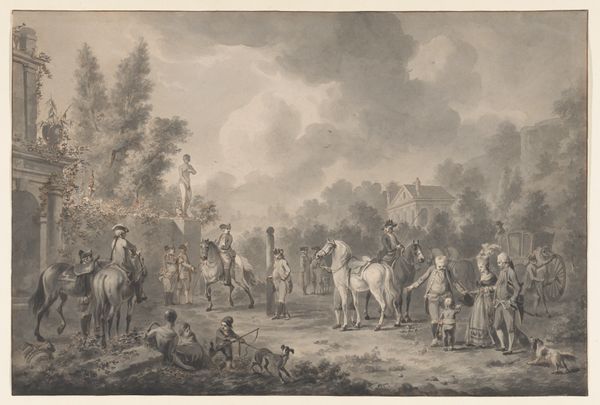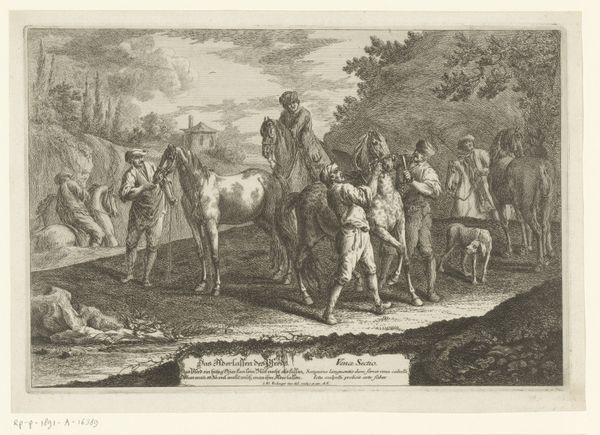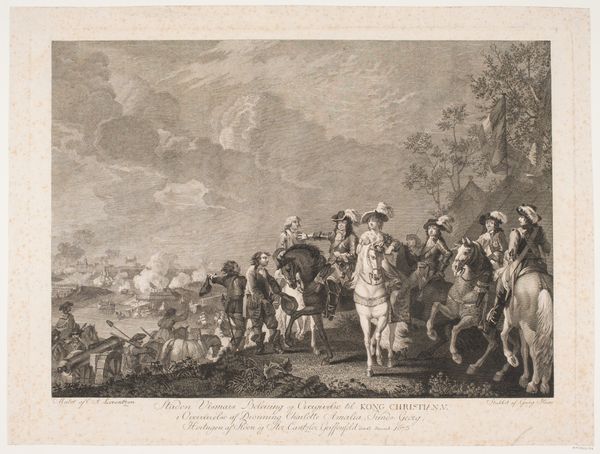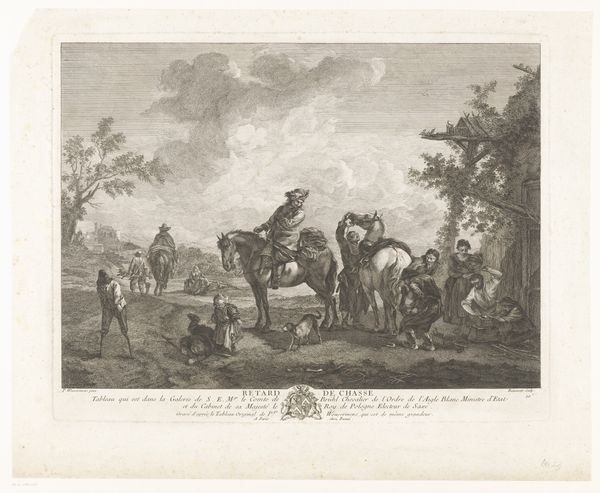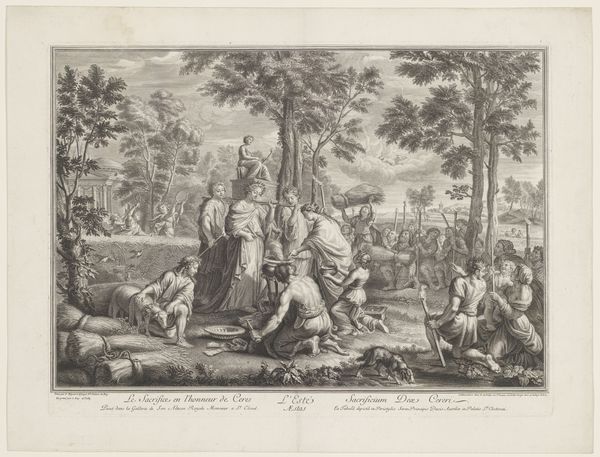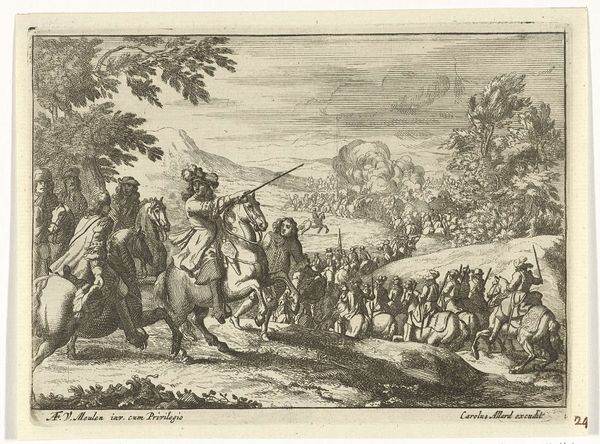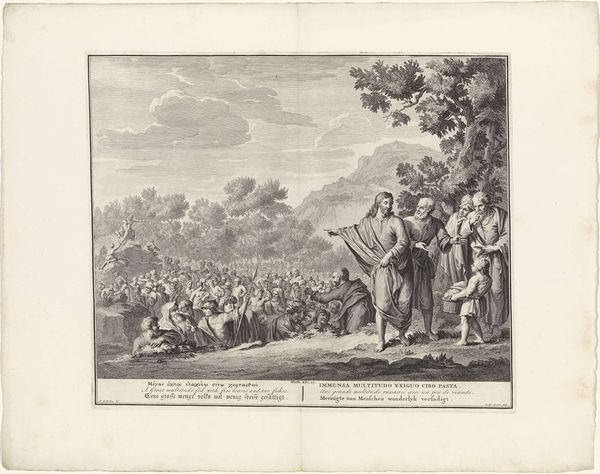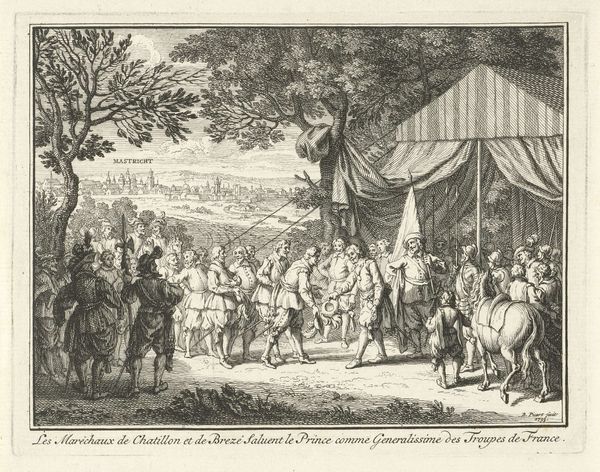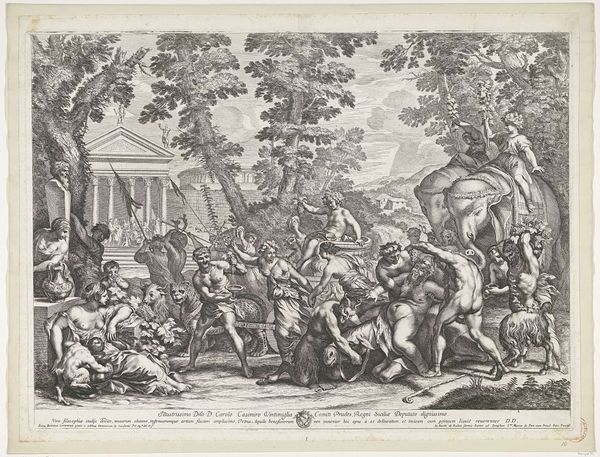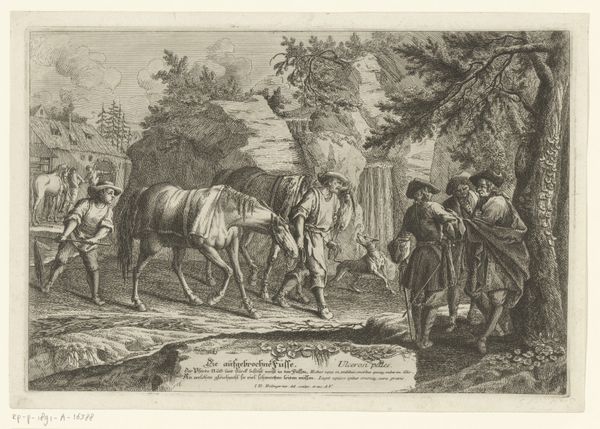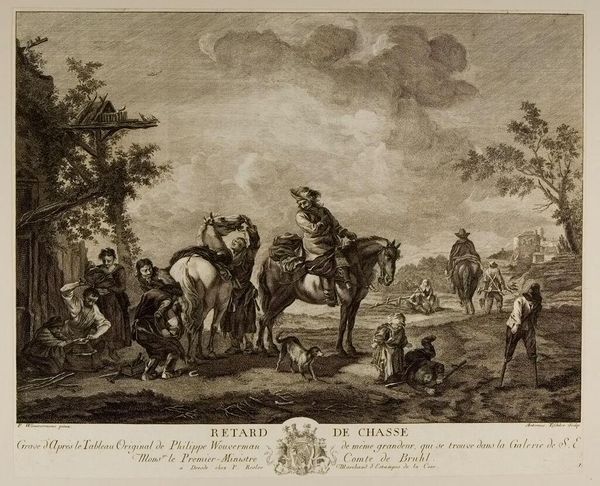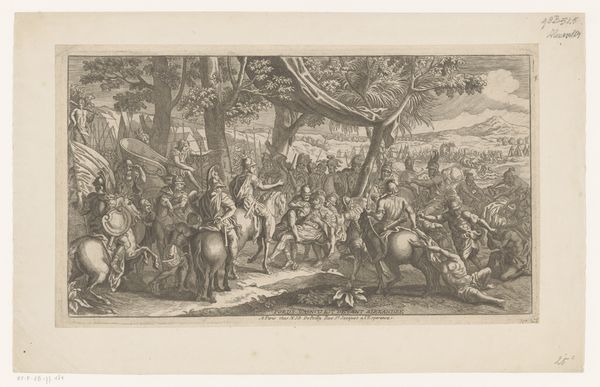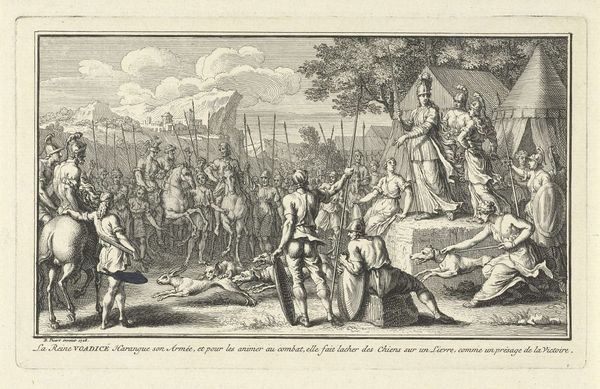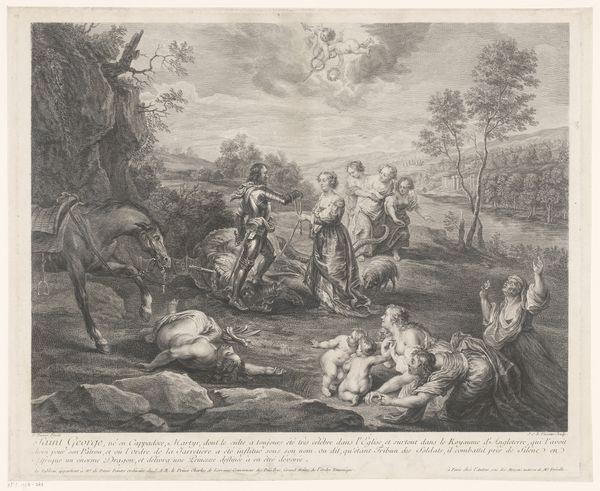
print, engraving
#
portrait
# print
#
landscape
#
history-painting
#
engraving
Dimensions: 365 mm (height) x 485 mm (width) (bladmaal)
Curator: Here we have “The Surrender at Tönningen,” an engraving by Georg Haas, completed sometime between 1790 and 1794. The artwork captures a historical moment, specifically, the capitulation of Tönningen to Frederick IV of Denmark. Editor: Immediately, I am struck by the detail! I mean, it's all lines, delicate, almost fragile, but depicting something rather decisive. Everyone frozen in a stately surrender dance. A melancholic symphony. Curator: Exactly. This piece exemplifies history painting as printmaking served a vital public function, spreading awareness and reinforcing state narratives. Look closely. Can you spot elements intended to legitimize power? Editor: Sure! There is the posture of Frederick IV, calm and collected upon his noble steed while the surrendering commander looks humbled, devoid of horse. But my eyes keep darting to the doggies in the bottom corner: all that high political drama overshadowed by the nonchalant lives of dogs is an intriguing element of everyday life peeking through officialdom. Curator: Precisely. Print's wide distribution made political iconography accessible, forming public sentiment. Consider the role engravings like this played in constructing a sense of Danish identity or belonging through shared history. Editor: That is a curious observation. As the figures parade across the plane, are they unified or disparate? The more I stare, the less confident I am that this picture broadcasts unequivocal solidarity. More so like, individuals gathered on happenstance. It might also be due to how sharp, fine, and precise those engraved lines and shades are. It lends each figure this separateness... Curator: An interesting perspective! Some art historians argue that such precision serves the opposite purpose, lending a sense of clarity and inevitability to the scene. Of course, interpretation always involves nuance. Editor: You are so right! And I suspect future generations, equipped with even more distance from the piece and access to more perspectives, might stumble upon new interpretations... Curator: Undoubtedly. “The Surrender at Tönningen” not only represents an event but also acts as a conduit to understand the power dynamics embedded in public art during its time. Editor: True. Gazing into "The Surrender," I find myself thinking less about hard "historical truths" and more about the strange alchemy of time, the delicate hand that etched this, and us—observers, interpreting long-ago echoes today.
Comments
No comments
Be the first to comment and join the conversation on the ultimate creative platform.
